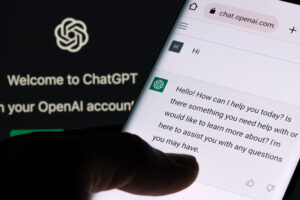
The advancements made in technology have historically challenged the observance of academic standards by students, allowing them to delegate their responsibility to digital tools. An agreement needs to be made regarding how students can use tools like ChatGPT without compromising on the standards of academic honesty.
Academic standards cover five key areas that define the violation of academic integrity standards: plagiarism, cheating, falsification, unapproved collaboration, and other unpermitted activities that undermine educational materials’ access, availability, and trust.
ChatGPT is the most widespread artificial intelligence generative language model that responds to users’ prompts in a conversational mode. The language model is based on an AI model version GPT3 and uses deep learning to compose human-like responses. From the large dataset it was trained on, it has learned to write articles, blog posts, essays, and emails suited for any context as long as it is well explained in the prompt.
Sam Altman, the CEO of OpenAI, the developer of ChatGPT, recently said in an interview that ChatGPT benefits everyone.
“The goal is to create artificial general intelligence,” said Altman. “The benefits the software provides are beyond what I can imagine.”
ChatGPT provides students with several benefits. Writing three pages of an essay with ChatGPT is as easy as inputting the prompt in the model’s interface. It also enhances students’ critical thinking skills by generating ideas and outlines for their work.
However, according to the standards of academic integrity, several risks are involved in using ChatGPT in academics for students. One is the potential for plagiarism when students directly copy and use the model’s responses. Since ChatGPT does not automatically provide attribution to the sources behind its responses, students can use it and fall guilty of plagiarism. The standards of integrity require the student to use tools, materials, and information that the course administrator permits. Many students may develop a dependence on it and never go through the research, analysis, critical thinking, and writing process. There have been initiatives to curb the use of ChatGPT by students that provide teachers with AI-enabled tools such as GPTZero to scan for AI-generated content in students’ responses.
Daryl Williams, a student at Florida State, writes several articles weekly and uses ChatGPT to cut the research time in half.
“Some classmates put me on after I asked how they weren’t getting burned out with an extensive course load,” Jones said. This game changer should be widely accepted soon as long as you use it for ethical purposes.”
When used correctly, there are acceptable ways to use ChatGPT, even in academics, without breaching the standards of integrity. One of the ways is to use it as a tool for inspiration and guidance instead of a complete replacement for their efforts and labor. This could involve generating ideas, developing outlines to guide your research and writing, using them to check for grammar correctness, and asking questions on a particular subject. Students should not present the text generated by the model as their own, and when ChatGPT is restricted, they should keep off its use.
Just like the computer for typing instead of handwriting, the internet for research instead of books, and calculators for complex calculations, ChatGPT can be used within the limits of academic integrity to make students more productive.